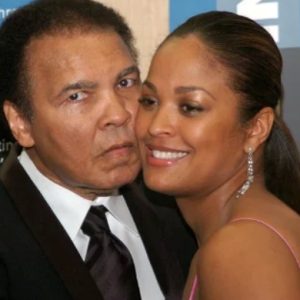Up and down, back and forth; the 1960s produced a heavyweight division that was as “counter-culture” as the United States of America itself at the time. Floyd Patterson, the “safe bet”, was upset by Ingemar Johansson to end the 1950s and the rematch would jumpstart the new decade.

Proving grounds for both, but especially Patterson who was the youngest heavyweight champion of all time, but a protected champion nonetheless. What everyone knew (even if they refused to openly acknowledge it or privately accept it) was that Charles “Sonny” Liston was the inevitable pathway of the heavyweight crown. Try as they may to delay it, Sonny Liston couldn’t be denied forever. He was a nightmare, “thee” nightmare even.
So there’s our three-way picture, but as is the case with most things in this life, the status-quo was to be upset even further and plunge the heavyweight division into a true, ultimate hellscape. At least it was seen as such by the contemporary people. What am I referencing, you ask? The controversy and magic that was the nuclear rise of Cassius Marcellus Clay Jr., of course. This young man would introduce an entirely new nature to that of heavyweight boxing with his brash, uber-confident, professional wrestling oriented style outside of the ring and his dancing means of “floating like a butterfly and stinging like a bee” inside of the ring. He was fresh, different, and SCARY. Change is always initially feared and though this young man’s impact is apparent today, back then it was looked down on. Clay was seen as a loudmouth fool who couldn’t hope to penetrate the current guard (remember, Sonny Liston was the inevitable truth of heavyweight boxing).
Imagine the craze that unfolded on February 25, 1964 when young Cassius stamped his first of many marks on history when he “shook up the world”. The terror that Sonny Liston evoked was replaced by immediate shock and an unknown fear at the hands of the newly christened Muhammad Ali. It’s the devil you know vs the devil you don’t; Liston or Ali? The people of the time rejected both, missing the days of Floyd Patterson and before (specifically the likes of Rocky Marciano, Joe Louis, and Jack Dempsey). Ali and Liston were even deemed to be a collective disgrace to the sport by past legends.
Imagine the further hysteria when Muhammad Ali turned out to be much more than his “Lip” and emerged as a legitimate runner in the race toward being the greatest heavyweight ever. Despite his being a Black Muslim and the worst nightmare of all things “traditional” at the time, his greatness couldn’t be denied. And then, in a flash, it was gone. His prime was halted and he was banished from boxing, leaving it in confusion and dismay.
The craziest part of this all? The frustratingly up-and-down 1960s heavyweight division had laid the foundation for what was to become the Golden Age of Heavyweights: the 1970s heavyweight boxing division. Of course, the usual marks are hit in one of my timelines: the fights, the behind the scenes, the drama, the Olympics, debuts & retirements, tragic deaths, etc. Oh and there’s even a new sanctioning body joining the action in the 60s; the World Boxing Council or WBC. That’s right, this is the further confusion of the title scene that still plagues the division today.

I’ve said too much already, you can enjoy this timeline in full now by watching the linked documentary. The 1960s heavyweights, in a way, remind me of the 1980s heavyweights. I explain why in the documentary. This is the long desired timeline of the 1960s heavyweight boxing division; the story of fear running rampant in the heavyweight division and the origin story of the Golden Age. From my heart to yours; this has been TheCharlesJackson, author of the Boxing Encyclopedia. Stay frosty, God bless, and don’t forget to subscribe on YouTube!






